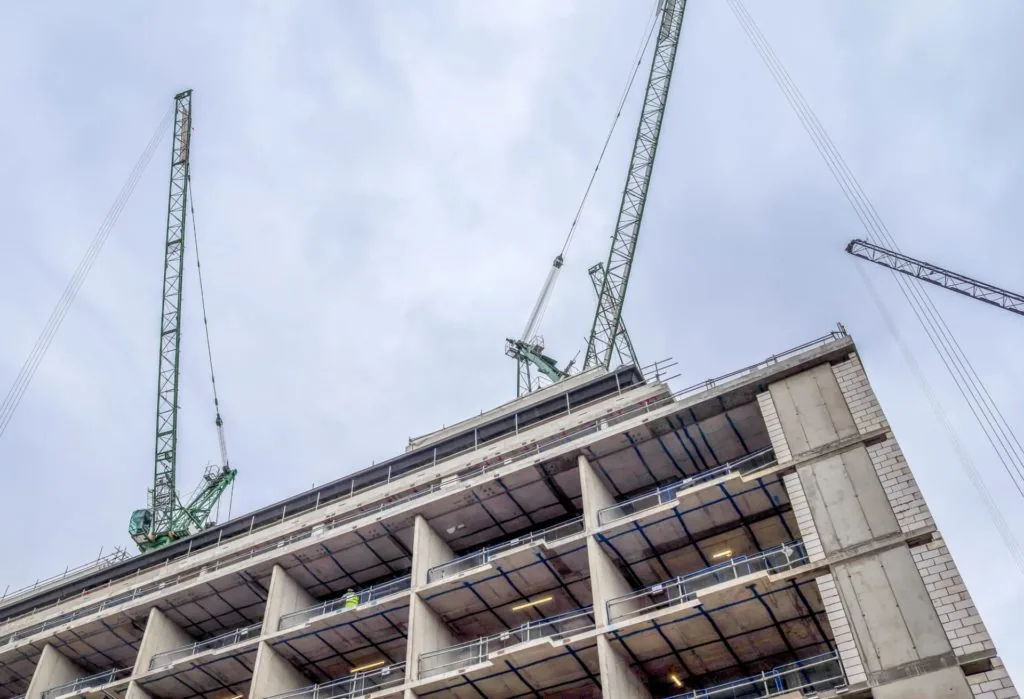
Partner
Projects, Infrastructure & Construction | Dispute Resolution | Energy & Infrastructure
This website will offer limited functionality in this browser. We only support the recent versions of major browsers like Chrome, Firefox, Safari, and Edge.

By Dickon Court, Joanne Rumley, Emily Woods
1 Oct 2024 | 2 minute read
On Friday 20 September 2024, eight entities of the construction giant ISG entered administration. As a result, all of its UK operations have ceased trading with immediate effect and no further work will be undertaken on existing UK contracts. ISG's insolvency is likely to be the largest collapse in the sector since Carillion's demise in 2018.
The insolvency of a large main contractor poses significant challenges for the supply chain and the industry in general. To help you navigate these challenges we have summarised some of the key issues and practical next steps for affected parties, many of which will be owed substantial amounts by ISG or have incomplete projects on their land.
Most standard forms of contract would allow ISG's employers to terminate upon an insolvency event. For example, under the main JCT and NEC forms, an administration event triggers the right to terminate for insolvency and have the work completed by others. However, many of ISG's contracts will be bespoke or framework contracts and as such each contract will need to be considered on its own wording and in light of insolvency legislation, which, in some circumstances, suspends the right to terminate.
ISG's subcontracts and consultant agreements will likely provide for back-to-back termination of the subcontract in the event the main contract is terminated, as is typical under the main JCT and NEC forms of subcontract. However, it is best not to take any steps to terminate until you have more information about if / when / how the project will proceed. For example, the contract may be assigned, or the employer may step in, and this cannot happen if you have terminated. Termination is always a big risk to take and should be considered carefully.
As a party to a contract with an insolvent contractor, your goals are likely to be to recover monies owed, minimise losses and to have input into or knowledge of what will happen to the project. To do this, it is important to notify the insolvency practitioner of your interests. A dialogue with the relevant insolvency practitioner is likely to be useful in most circumstances. Submitting a proof of debt form is also a key part of this process.
Unfortunately, claims against a company in an insolvency process rarely result in full recovery, especially for unsecured creditors. We therefore strongly suggest exploring the other legal and contractual mechanisms available to recover your losses and/or secure completion. In general, these can include calling on collateral warranties, bond claims or taking action against the insurer of the insolvent contractor directly (i.e., under the Third Parties (Rights Against Insurers) Act 2010). As to the latter, notification to the insurer within an insured period is key. Moving fast gives you a far better chance of a recovery (though it is often still not great!).
It is also worth noting that in an administration a moratorium will be in place which can prevent the bringing of legal action or proceedings against the company without either first obtaining the consent of the administrator or leave from the court.
Your next steps will depend on your role in the project and the stage it has reached. As a starting point, we suggest that you consider the following actions:
The company in administration/liquidation may attempt to complete the project. While this seems unlikely in the context of ISG since all UK operations have ceased, if you’re approached to continue work, we suggest negotiating appropriate terms for your circumstances (we can assist with this). We also suggest letting the administrator know your interest as soon as possible (including submitting any proof of debt) in order to stay informed and vote on creditor proposals.
Get an accurate picture of the state of completion and obtain the relevant evidence to prove this – don’t assume the last contract valuation is correct/will be relied upon by the administrator. A site audit may be appropriate. This will likely require liaison with the administrator/liquidator.
Secure the site or your property on it. Where you have control to secure materials and equipment you should be able to take steps to do so. Otherwise, and with retention of title rights, you will need to liaise with the administrator/liquidator in order to take steps for recovery.
Check your documentation and obtain copies, if at all possible, of key design and progress documents, as well as making sure you have a full set of all contractual documents, including collateral warranties. Download everything from any project portals.
Do you now need to insure the works or the site?
Check your termination rights and the process (particularly the conditions / steps required before you can validly do so). Take advice on / ascertain whether termination is appropriate in your circumstances. Be aware that terminating without being confident of your termination right can be risky and leave you exposed to claims.
Depending on your contract, further works may be suspended. However, a main contractor in an insolvency process may well still have the right to require sub-contractors to continue work. They can also still adjudicate and bring claims.
Review the current payment arrangements in light of the insolvency and consider whether monies which were going to be paid should be stopped and pay less notices issued accordingly. Check your contract for relevant set-off provisions.
What you do with your own supply chain for the project will depend to a large degree on termination/suspension/whether the project will continue. Whatever happens you will need to look at your contracts and requirements carefully.
Check whether these apply, including the type, expiry dates, relevant ‘triggering’ events and any conditions.
Begin discussions with (as appropriate) the administrator/liquidator, employer, group companies any funders or others involved in the project to ascertain what needs to be or can be done to continue the works. Check step-in rights. However, this should not be immediate. Bypassing a company in administration/liquidation can be risky – the company still exists, and you still have a contract with them until terminated. Check with your solicitors before taking that kind of action.
Our team has significant experience helping clients to navigate insolvencies in the construction industry. The effect of ISG's insolvency will spread beyond those directly affected very fast. Being aware of your legal rights and options allows your decision making to be more agile and strategic. We can assist you in proactively managing the myriad issues that arise and that need to be considered in situations like this.
Please do get in touch with our team if you have any questions.